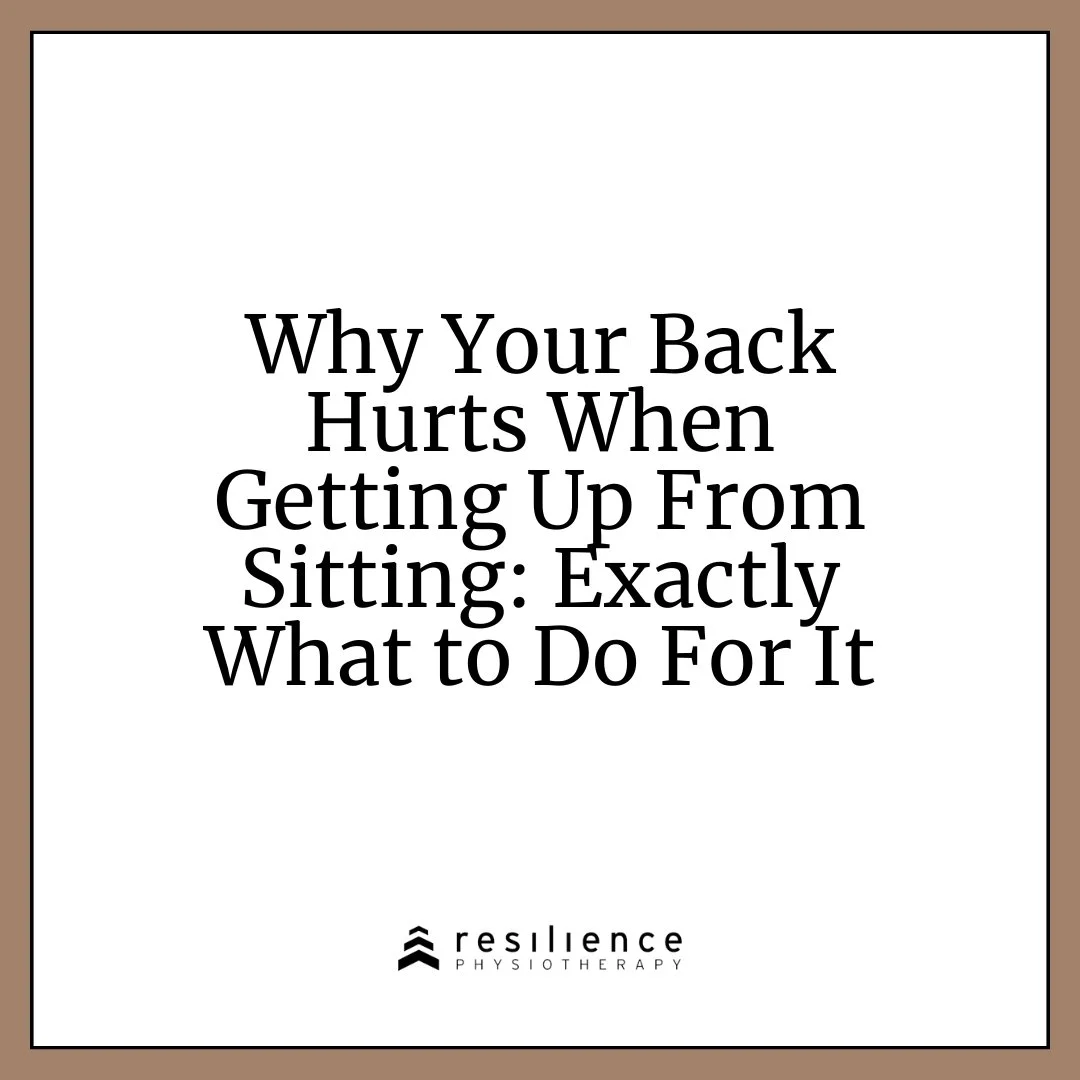Why Your Back Hurts When Getting Up From Sitting: Exactly What to Do For It
Does your back hurt when you get up from sitting for too long?
Let's talk about what exactly is going on and what you can do to make your back feel better and get some pain relief.
What's going on when your back hurts when you get up?
Ever heard of the phrase your best position is your next position? Motion is lotion and all of our joints (especially our spine) do not like to be static for a long period of time.
There is something called synovial fluid found in many of our joints that acts like WD-40 and allows the joints to move and function more smoothly. When our joints are moving freely, there is less strain placed on the muscles overlying them.
If your back hurts when you’re getting up from sitting or after you’ve slept for a period of time, it’s a sign that there could be an inflammatory process happening.
Inflammation is like a chemical soup that is really thick when it’s cold or you’ve been immobile and warms up/becomes more viscous when you move around.
When you’ve been sitting for a while, gravity acts upon your spine and adds compression to your discs/joints etc. and blood flow is reduced.
If you’ve got any pathology present such as degenerative disc disease, spinal stenosis, herniated discs, sciatica, it’s likely going to be aggravated.
When we’re in a seated position and we inevitably slump after a period of time, this also places our entire nervous system in a position of stress. This can place tension/compression on the nerves and they can react by producing a pins & needles, tingling, burning or numbness sensation.
These are signals that a nerve will send when it’s in distress.
Sitting on a low soft couch exacerbates this slump posture and is consistently one of the worst surfaces to sit on if you’ve got low back pathology.
Even when there’s not acute pathology happening in the back, poor ergonomics at work can lead to pain as well. Some folks will lean to one side of their chair or forward on the desk.
Poor posture is often secondary to weak core and glute muscles & overactive/ tight hip flexors. The muscles of the lumbar spine will fatigue quickly which can lead to pain and strain in these less ideal postures.
So what can you do stop your back from hurting when you stand up?
Consider a sit stand desk or an adapter for the top of your existing workspace that can transform it into a sit-stand desk and change positions frequently!
I would recommend setting a timer for every 45 minutes of your work day. When it goes off, switch your position from sitting to standing.
If you don’t want to invest in a standing work option, get down on the floor to do some spinal mobility exercises, stand up and stretch or go for a walk before getting back into a seated position.
When you do return to sitting at a desk, think about a marionette string pulling you up tall, your weight evenly dispersed between your sit bones, feet flat on the floor and arms relaxed at your sides.
Sitting posture and varying your sitting positions is very important.
If you have active low back pain, try and choose chairs that are a decent height that are firm and supportive versus low and soft (stay away from your couch)!
Your hips should be slightly above your knees. If you need a little extra support, roll up a towel and place it at the top of your tailbone to give additional lumbar support.
Strengthen your core and glute muscles!!
Pilates is a wonderful form of exercise that places a huge emphasis on strengthening all the little muscles that stabilize your spine and pelvis.
There are many classes in person or online that you can check out. My go to person to work with is Nikki Bergen and her company is called The Belle Method.
She has an amazing online program for rebuilding your core that you can purchase here if you have no idea where to start.
She is wonderful with cueing and can really kick your butt! Once you have laid a good foundation, she also has amazing core and glute challenges here which really kick things up a notch.
(PS- If you are local to the Toronto Annex area, we offer in-person physio pilates (pilates taught by a physiotherapist and pilates-based physiotherapy) at our practice.)
I promise you that even if you primarily lift heavy weights, this smaller stabilization work can really humble you if you try it and will enhance/support the bigger lifts that you perform.
Stretch and perform spinal mobility work each day! Stretching hip flexors, glutes, quads and hamstrings are great places to start.
Spinal mobility exercises like segmental cat/cow or bridge where you should envision moving your spine vertebrae by vertebrae are fabulous for lubricating the various joints of the spine and thread the needle does a lovely job of working on your spinal rotation.
See my blog on Exercises for Low Back Pain here for more details.
Consider seeking professional help (physiotherapy!)
At Resilience Physiotherapy we specialize in treating your low back pain and can give you tailored guidance on what to do and what to avoid to help reduce your pain and get you moving again!
We have various treatment options and specialities at the clinic including hands on manual therapy, acupuncture, Gunn IMS/Dry Needling, exercise rehabilitation and clinical pilates that will help with your recovery.
Learn more here and book in for a free 10 minute consultation to learn more today!

